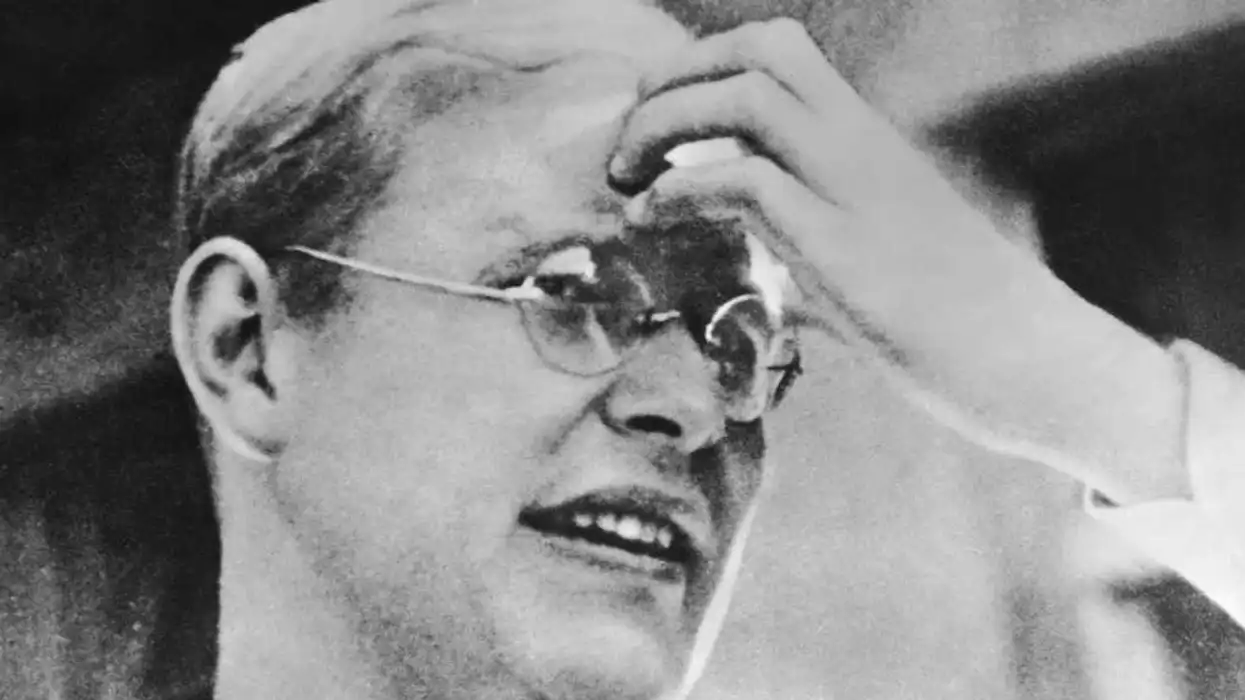
© 2026 Blaze Media LLC. All rights reserved.
Physician-Assisted Suicide: Poll Shows 2X People Voted Against It After This Debate
November 14, 2014
"Will these laws lead to a slippery slope ... ?"
A group that hosts debates on volatile social, economic and political topics took up the question of physician-assisted suicide after Brittnay Maynard's case gave the topic national attention this month. And 45 percent of the audience changed their mind completely, voting either for, against or undecided after listening to just one hour of debate on the topic.
Though more than half the audience voted to support legalizing doctor-assisted euthanasia, the number of people who said the act shouldn't be legal doubled in size.
Intelligence Squared, the group hosting the debate, polled the audience before and after the debate, asking participants to vote yes or no on one statement: "Legalize Assisted Suicide."
 Results of the yes or no poll to "Legalize Assisted Suicide" debate, hosted by Intelligence Squared (Image source: Intelligence Squared).
Results of the yes or no poll to "Legalize Assisted Suicide" debate, hosted by Intelligence Squared (Image source: Intelligence Squared).
The hour-long debate raised questions of a 'slippery slope' and the value of human life.
"In 1994, Oregon voters passed the Death with Dignity Act, which legalized physician-assisted suicide for the terminally ill. Since then, it has become legal in 4 more states, including New Mexico, where the state court ruling that it is constitutional is under appeal," the iQ2 site notes.
"Is it, in the words of the American Medical Association’s code of ethics, 'fundamentally incompatible with the physician’s role as healer?'" the site asks. "Will these laws lead to a slippery slope, where the vulnerable are pressured to choose death and human life is devalued? Or do we need to recognize everyone’s basic right to autonomy, the right to end pain and suffering, and the right to choose to die with dignity?"
According to group, "55% of the audience voted the same way in both pre- and post-debate votes (47% voted FOR twice, 6% voted AGAINST twice, 2% voted UNDECIDED twice)."
Almost half of the group changed their mind after the debate; "45% changed their minds (7% voted FOR then changed to AGAINST, 9% voted FOR then changed to UNDECIDED, 5% voted AGAINST then changed to FOR,0% voted AGAINST then changed to UNDECIDED, 15% voted UNDECIDED then changed to FOR, 9% voted UNDECIDED then changed to AGAINST)," the site explains.
 The group allowed online viewers to cast their votes as well, and the "against" side had 29% more of the vote from the online audience (Image source: Intelligence Squared).
The group allowed online viewers to cast their votes as well, and the "against" side had 29% more of the vote from the online audience (Image source: Intelligence Squared).
Intelligence Squared offered the discussion in their standard Oxford-style debate format, with one side proposing and the other side opposing a sharply-framed motion.
Before the debate begins, the audience registers their pre-debate opinion using an electronic voting system (those results are announced later in the program). The audience then hears debate from both sides of the issue from panel members, then the audience delivers the final verdict by voting again whether they are for, against, or undecided on the proposition.
After the debate concludes, the two sets of results are compared and the winner is determined by which team has swayed more audience members between the two votes.
Those interested in the debate can also participate online now. The Intelligence Squared site hosts the full debate online and allows viewers to cast their vote.The online numbers skew far more against the motion, than for it.
Watch the debate below, then cast your own vote.
--
Follow Elizabeth Kreft (@elizabethakreft) on Twitter
Want to leave a tip?
We answer to you. Help keep our content free of advertisers and big tech censorship by leaving a tip today.
Want to join the conversation?
Already a subscriber?
more stories
Sign up for the Blaze newsletter
By signing up, you agree to our Privacy Policy and Terms of Use, and agree to receive content that may sometimes include advertisements. You may opt out at any time.
Related Content
© 2026 Blaze Media LLC. All rights reserved.
Get the stories that matter most delivered directly to your inbox.
By signing up, you agree to our Privacy Policy and Terms of Use, and agree to receive content that may sometimes include advertisements. You may opt out at any time.






